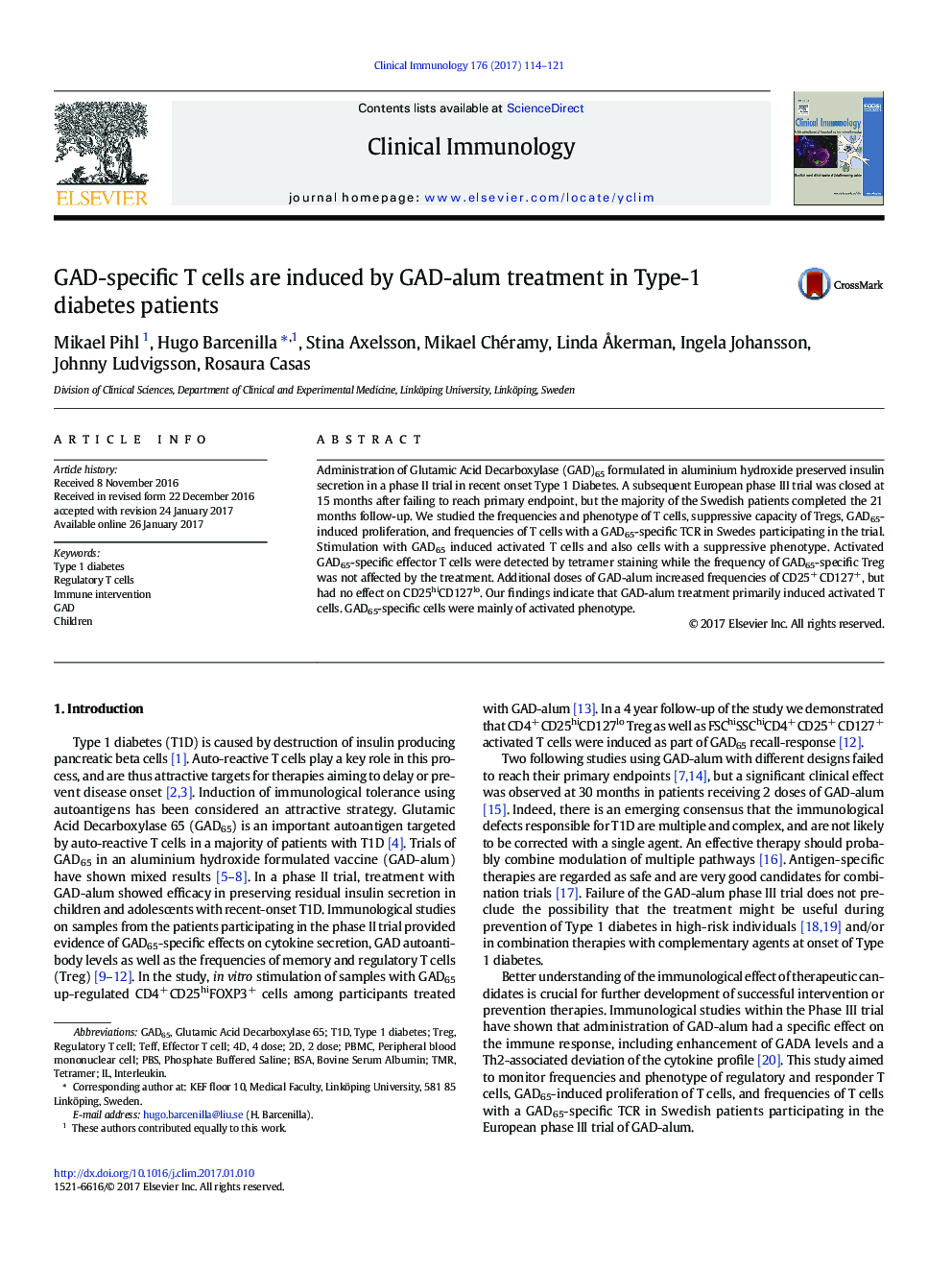| Article ID | Journal | Published Year | Pages | File Type |
|---|---|---|---|---|
| 5654930 | Clinical Immunology | 2017 | 8 Pages |
Abstract
Administration of Glutamic Acid Decarboxylase (GAD)65 formulated in aluminium hydroxide preserved insulin secretion in a phase II trial in recent onset Type 1 Diabetes. A subsequent European phase III trial was closed at 15Â months after failing to reach primary endpoint, but the majority of the Swedish patients completed the 21Â months follow-up. We studied the frequencies and phenotype of T cells, suppressive capacity of Tregs, GAD65-induced proliferation, and frequencies of T cells with a GAD65-specific TCR in Swedes participating in the trial. Stimulation with GAD65 induced activated T cells and also cells with a suppressive phenotype. Activated GAD65-specific effector T cells were detected by tetramer staining while the frequency of GAD65-specific Treg was not affected by the treatment. Additional doses of GAD-alum increased frequencies of CD25+Â CD127+, but had no effect on CD25hiCD127lo. Our findings indicate that GAD-alum treatment primarily induced activated T cells. GAD65-specific cells were mainly of activated phenotype.
Keywords
Related Topics
Life Sciences
Immunology and Microbiology
Immunology
Authors
Mikael Pihl, Hugo Barcenilla, Stina Axelsson, Mikael Chéramy, Linda Ã
kerman, Ingela Johansson, Johnny Ludvigsson, Rosaura Casas,
